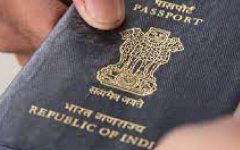“Sikkim High Court Upholds Conviction in POCSO Case, Affirms Victim’s Age Based on Verified Birth Register”
June 24, 2024 2024-07-05 17:02“Sikkim High Court Upholds Conviction in POCSO Case, Affirms Victim’s Age Based on Verified Birth Register”

“Sikkim High Court Upholds Conviction in POCSO Case, Affirms Victim’s Age Based on Verified Birth Register”
By Shazia Siddiqui
In a recent ruling, the Sikkim High Court upheld the conviction of an individual accused under the Protection of Children from Sexual Offences (POCSO) Act. This case revolves around the appellant’s conviction by a Special Trial Court for sexually assaulting a seventeen-year-old girl. The appellant contested this conviction, primarily disputing the victim’s age as presented during the trial.
The appellant was originally found guilty by the Special Trial Court under Section 7 of the POCSO Act. One of the central issues raised in the appeal was the validity of the evidence regarding the victim’s age. The defense argued that the age stated on a photocopy of the victim’s birth certificate, as well as the entry in the live birth register, was not legally substantiated because the original birth certificate was not produced in court. Instead, the court was presented with a photocopy, supported by testimony from the Registrar of Births and Deaths (PW-5), who provided a photocopy of the live birth register that recorded the victim’s date of birth.
During the trial, the prosecution relied heavily on this photocopy (referred to as “Doc A”) and the testimony of PW-5 to establish the victim’s age. The Registrar testified that the photocopy provided was a true reflection of the entries in the original live birth register, despite the original document not being presented. Notably, the birth register did not record the informant for the birth entry, and this informant was not summoned as a witness. Nonetheless, the Trial Court concluded that the evidence provided by PW-5 was sufficient to verify the date of birth on the photocopy, accepting it as proof of the victim’s age.
On appeal, the High Court examined whether the lower court erred in its judgment regarding the victim’s age. The defense’s argument focused on the lack of the original birth certificate and the unavailability of the informant for cross-examination. However, the High Court found that the defense did not sufficiently challenge the authenticity of the birth certificate photocopy during cross-examination. Justice Meenakshi Madan Rai noted that the cross-examination of PW-5 did not effectively question the validity of “Doc A” or its contents. Instead, it reaffirmed the accuracy of the document as verified by PW-5, who had consistently stated that the photocopy was a true copy of the original record.
The High Court emphasized that the defense failed to present any evidence or arguments that would undermine the credibility of the birth register entry or the photocopy of the birth certificate. The court observed that since PW-5 had identified the photocopy as a true reflection of the original register, and this assertion went unchallenged in cross-examination, the Trial Court’s reliance on this document to determine the victim’s age was justified.
The Sikkim High Court upheld the conviction, agreeing with the Trial Court that the evidence presented, specifically the testimony and documentation provided by PW-5, was adequate to establish the victim’s age. The ruling highlighted the importance of thorough cross-examination and the necessity for the defense to effectively challenge the prosecution’s evidence to contest such critical details successfully.
Case Title: Ganesh Tamang vs State of Sikkim
Citation: Crl. A. No.10 of 2023









